What? |
|---|
|
Okinoerabujima (沖永良部島) or Okinoerabu Island (shima/jima means island in Japanese) is a rather large island of the Ryukyu Islands (琉球諸島) located south-east of Japan’s main islands, between Kyushu (九州) and Taiwan. Just like close by Okinawa (沖縄) it has a subtropical climate, but it is less touristic because most of its coastline is dotted with sharp and hard coral rocks and stones. The same coral stones become beautiful coral reefs once in the water, which makes Okinoerabu a great place for diving. Apart from some dramatic coastline spots, the biggest asset of the island is a large limestone cave, Shoryudo (昇竜洞), of which 300 meters is accessible for tourists and other parts are open for caving activities. The island is too big to walk around, but I recommend getting out there on foot or by bicycle to soak in that island feeling. For bigger distances a car is more than welcome. |
Where? |
Despite its proximity to Okinawa, Okinoerabujima is a part of Kagoshima Prefecture (鹿児島家) in the south of Kyushu. You can reach the island by plane from either Kagoshima Airport or Okinawa’s Naha Airport, or by the A-liner ferry which does some island hopping between Kagoshima and Okinawa. Whichever route you take, prepare to relax as it will take some to get there.

|
URL |
|
Okinoerabu Island Tourism Association Japan Travel |
We didn’t really have a plan on how to spend the holiday season around the turning of the year. Usually we’d either cozily stay home or visit family. On a whim though, we decided to go for something completely different this time.
A few years earlier, we met someone who would turn out to be a good friend, and she was from the Okinoerabu Island. I pride myself that I have visited a lot of places in Japan, but I never even heard of the place. I decided there and then that one day I would be visiting the island that actually has more in common with nearby Okinawa than with Kagoshima, the prefecture it is a part of.
Despite that early resolve to once set foot on Okinoerabu Island, we completely went unprepared. I didn’t even know when our flight back would be. But that eventually was a blessing in disguise, as our friend’s father picked us off the street (literally), showed us around the island and wouldn’t take no for an answer. For three days long he would be our guide, driver and benefactor.
So that’s how we – still a bit weary from the flight – ended up on a remote, unnamed beach on the eastern side of the island. He showed us a spot that immediately taught us a lot about how the island came to be. Okinoerabujima isn’t a volcanic island like so many in Japan, but is actually one huge coral reef pushed up by different tectonic plates. Because there is no real peak that has always stuck out of the water, there is no wildlife to be found on the island. That’s a pity, but the coralline character of the land does make for some absolute awesome coastline.
One peace of this awesome coastline can be seen a little bit more to the left of where we were, at a place called Fuucha (フーチャ). Surrounded by a sea of coral stone, there is a cave that has been formed by the continuous bashing of the actual sea. Waves have made a hole on the side so you can pear through the arches, watching waves upon waves crash onto the rocks, only to make the cave bigger and bigger… until in time it will probably collapse. For now though, Fuucha is a place that must absolutely be seen when you are on the island.
The northwestern tip of the island is called Tamina Cape (田皆岬) is another beautiful spot from where you can see the fantastic landscape of the island. Steep cliffs alternate with vast areas of coral stone, and are overseen by a sober lighthouse. When we visited the wind was fierce, making it rain salty sea drops. It would have been too dangerous to get all the way to the edge of the cliffs, but on a calm day it would definitely be possible as no fences are in place, so you can enjoy the beauty without any hindrance.
A newly made walking path goes around the tip of the cape, making for a fantastic stroll in the middle of the coral stone landscape.
While the northern side of the island is filled with cliffs and coral stone, the south and south western side offer less dramatic views, but more enjoyable ones if you’re fond of beaches and fancy a dip in the ocean. Our local guide again lead us to an unnamed beach where we spend ourselves adjusting to the local rhythm; we laid ourselves in the sand and just enjoyed the good weather and the calmed down sea, occasionally getting up to check out some shells or just to do some stupid things people do when they’re without worries.
Other coastline spots that we visited were the Yakomo Beach (屋子母海岸), the Ujiji Beach (ウジジ浜) and the Kasaishi Beach Park (笠石海浜公園), all located on the southern shoreline.
The island is not all about beaches and cliffs though. In fact, the biggest touristic asset can be found inland. The Shoryudo Limestone Cave was not something I expected to find on a subtropical island, and I even less expected it to be open on New Year’s Day. But here we were, with all the luck in the world, the place was open and completely void of any other visitors. So we had this magnificent, pretty big cave all to ourselves. The ticket vendor told us the 300 meter walk underneath the surface of the earth would take around 30 minutes. It took us double that time.
I have seen many limestone caves in Japan by now, but this must be my second favorite after Yamaguchi’s Akiyoshi Cave. The cave has a wide entrance, alternates broad spaces with small passages, has some very impressive stalactites and/or stalagmites (forgive me, I can’t remember which is which), it has a small but clear stream flowing through it, but it is fantastic for what it lacks: there are very few fences, there are no lightshows and the lighting is very sober. All this accentuates the absolute natural beauty of the cave.
It is possible to join some caving activities in different parts of the underground complex, but as we went unprepared, all these activities were fully booked.
Every day we were on the island we visited the top of Koshiyama (越山) or Koshi Mountain. With its 188 meters it cannot really be called a mountain, nor is it the highest point of the island. It also doesn’t have any walking or hiking courses: the only approach is on asphalted roads which are also accessible by cars. We did do the walk from our hotel to Koshiyama though. Given the size of the island, there aren’t many cars about, and walking makes you notice more details of the surroundings and lets you stop regularly for this plant or that flower and such curiosity. The view from the top is great as you get an overview from the whole island, especially the sharp tipped eastern side of the island. In the morning you can witness a beautiful sunrise, which we did on New Year’s Day when our friend performed a taiko drum performance. Despite the problems with the audio it was a mesmerizing experiences with the rising sun as backdrop.
Usually I want to be prepared at least to some extent when I go somewhere. In this case however, I think it was our complete unpreparedness that lead to us having a great time. That and the friendliness of our local friend and her family, and of basically everyone on the island.
We still have to do those caving activities, and other beautiful island like Yoron are nearby, so I’m pretty sure we’ll return rather sooner than later.
>>More pictures<< |
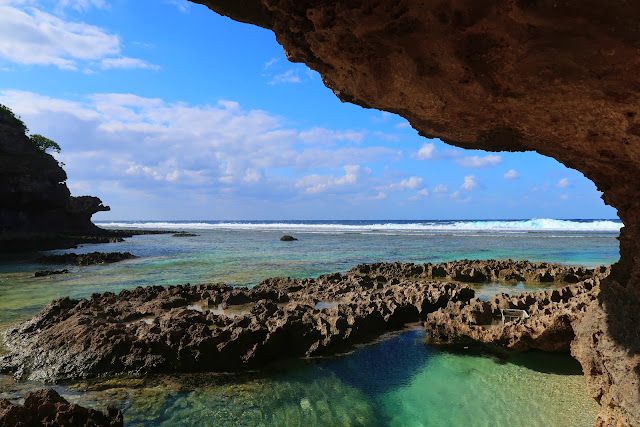
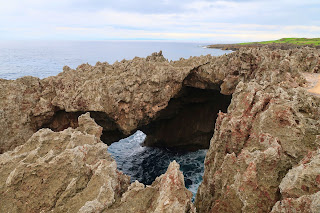
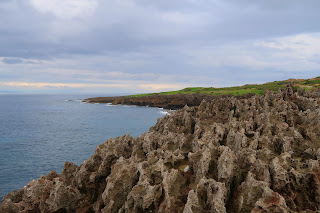
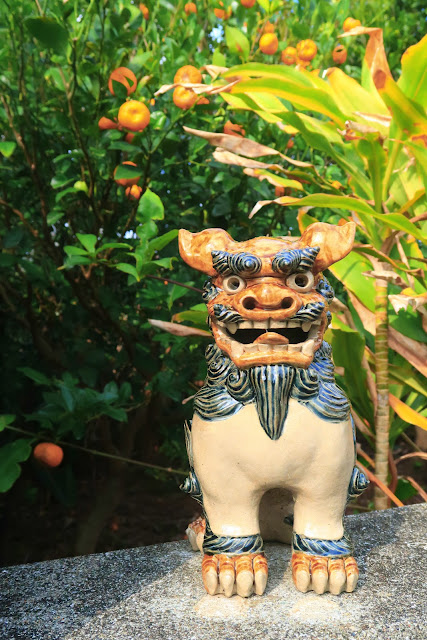
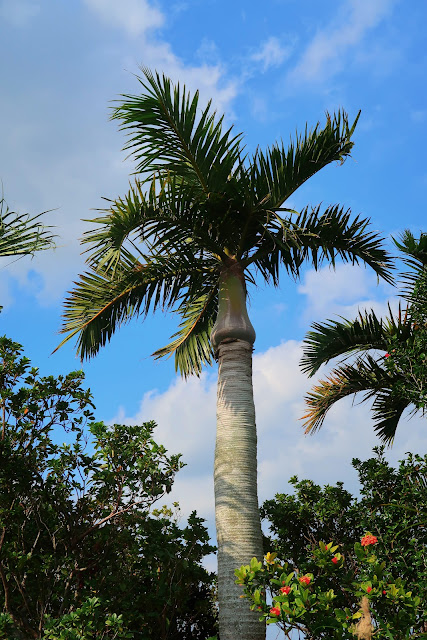
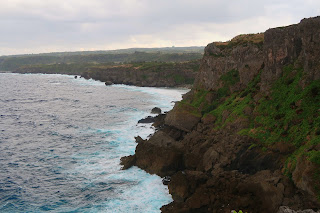
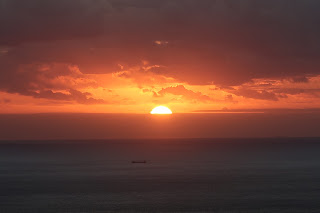

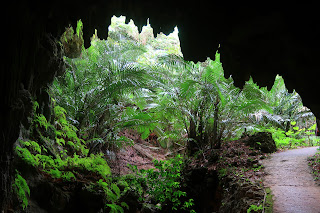











No comments:
Post a Comment